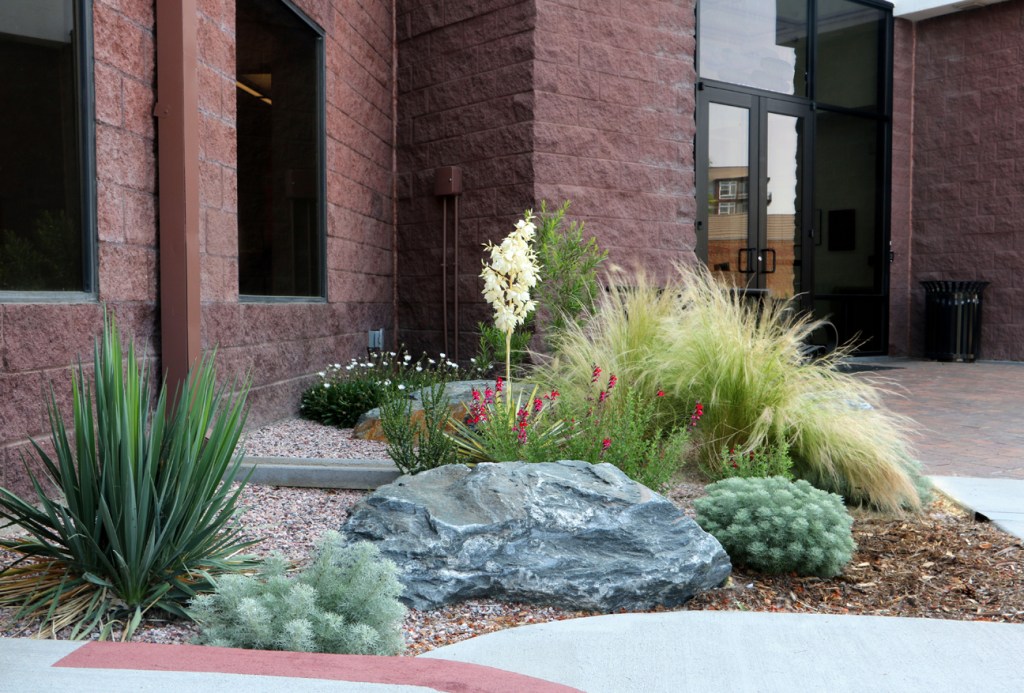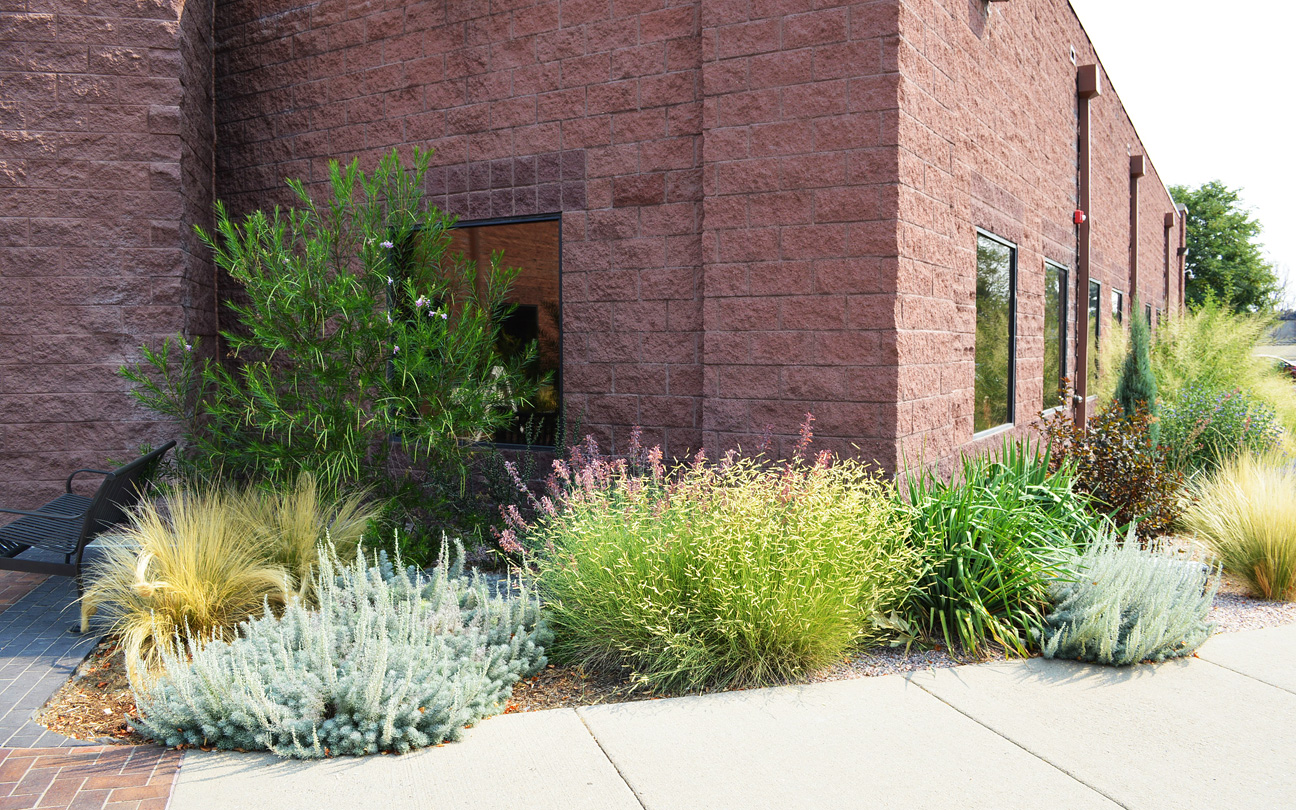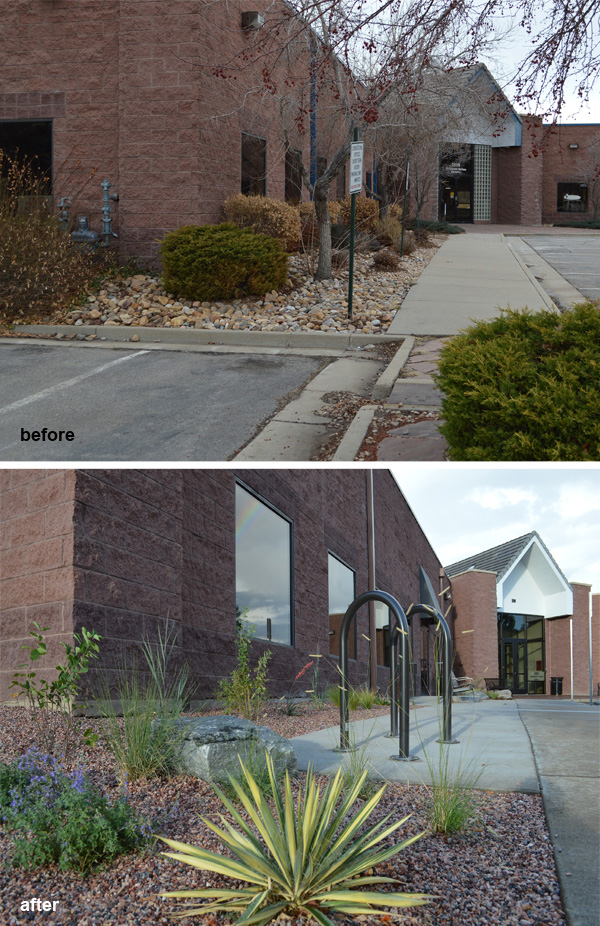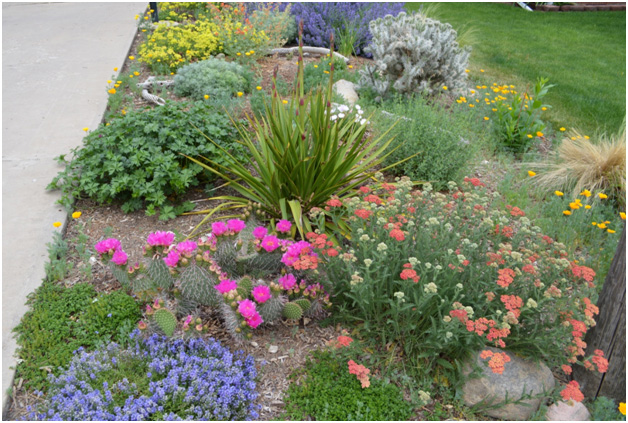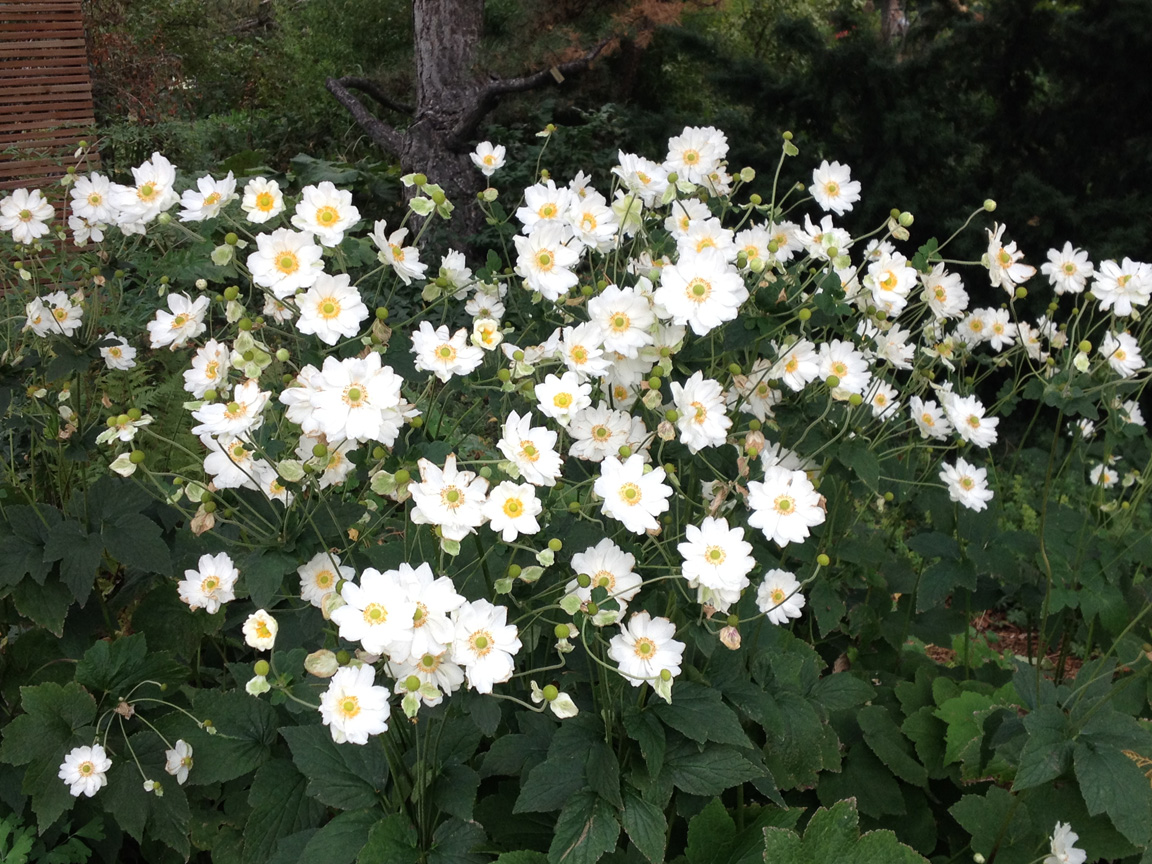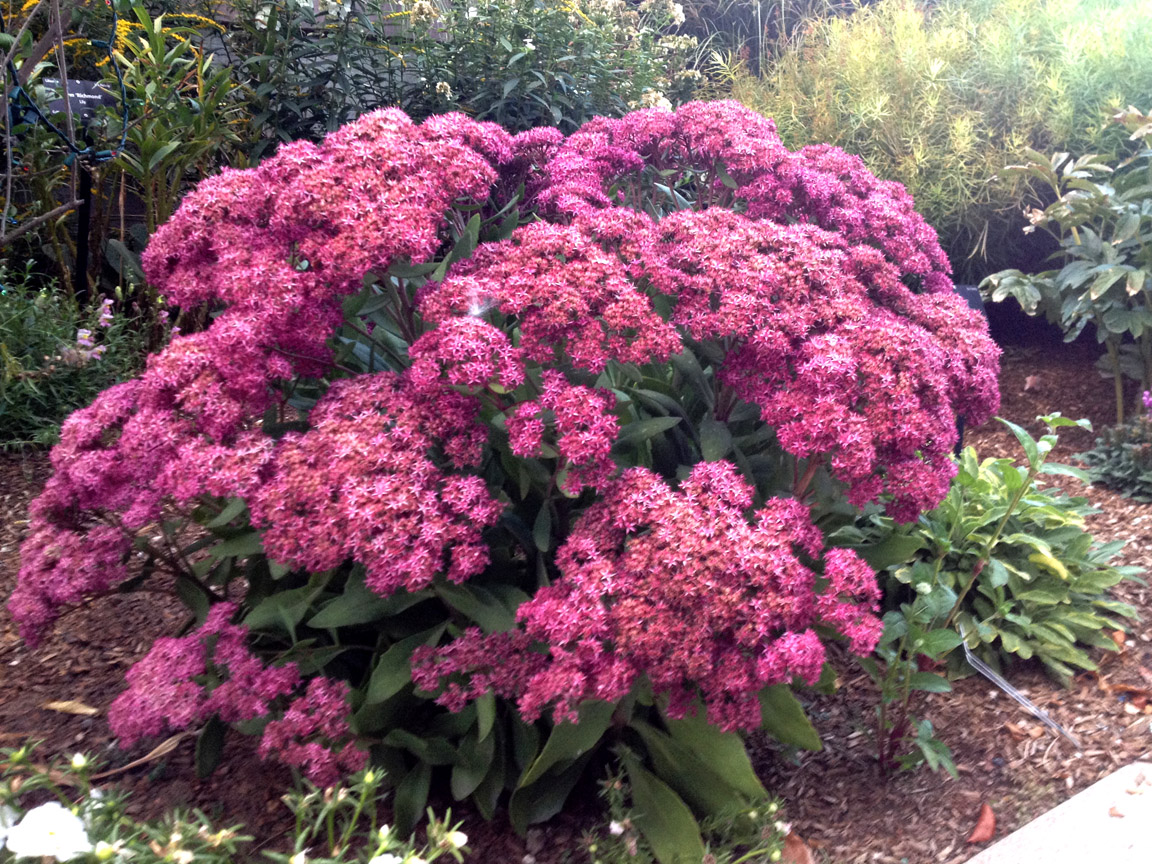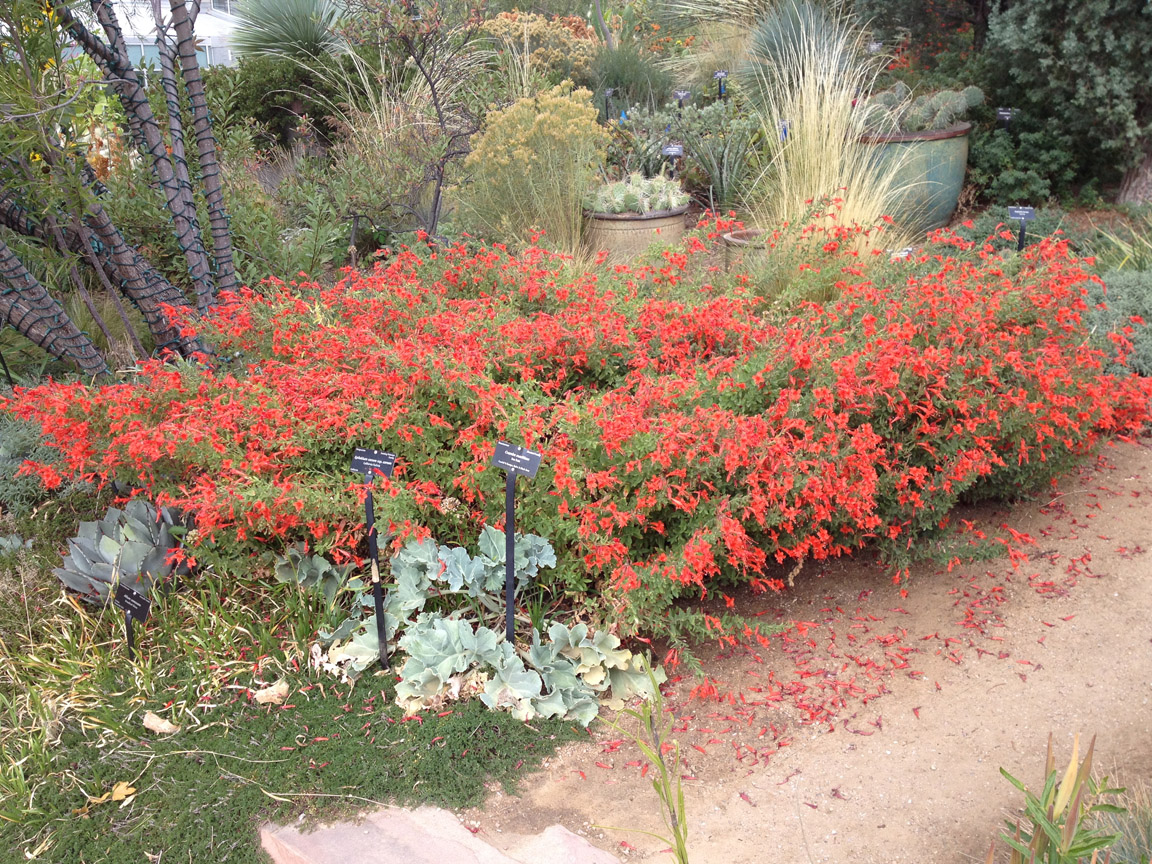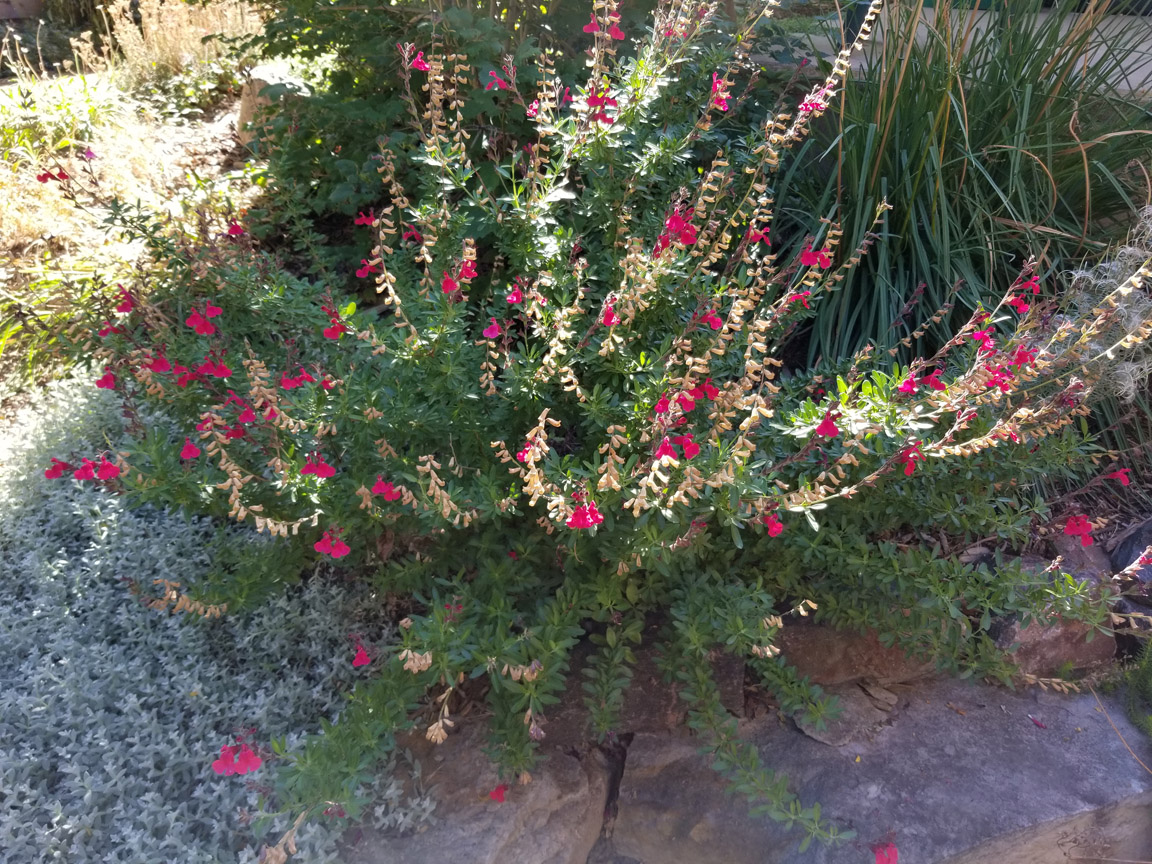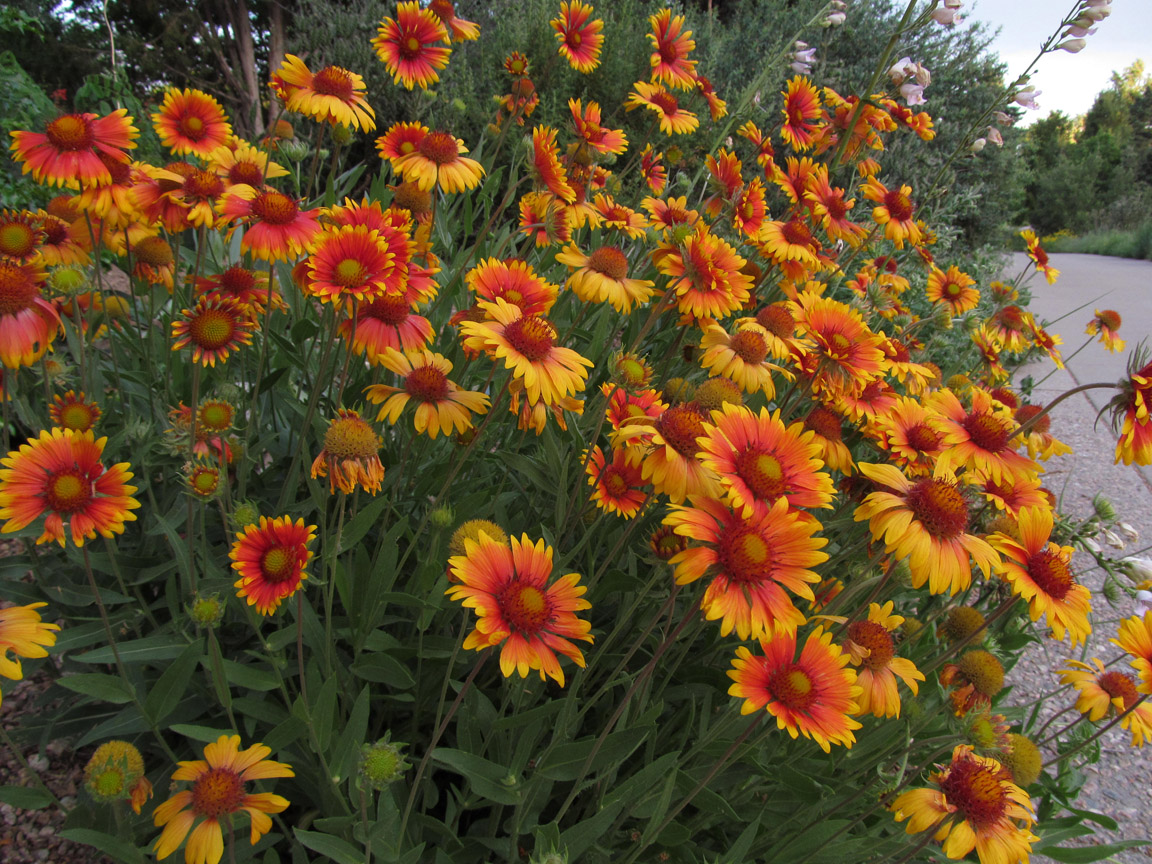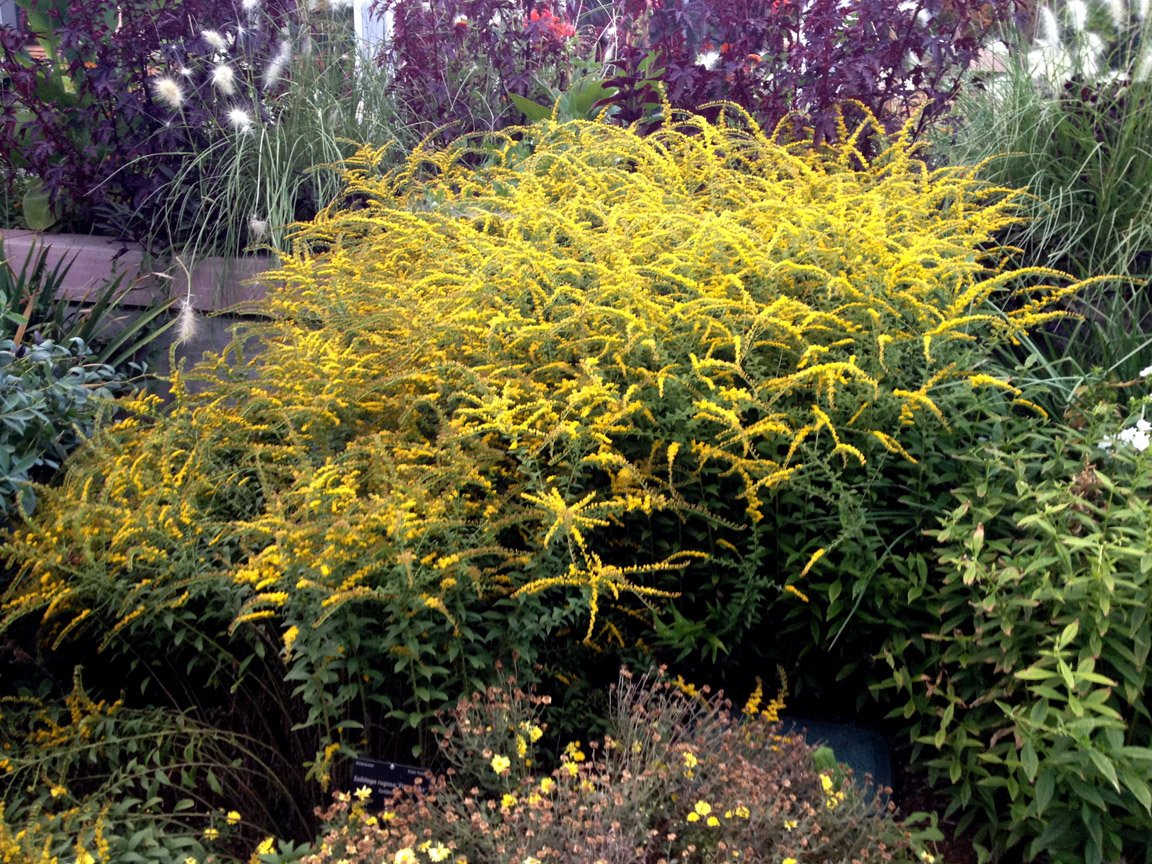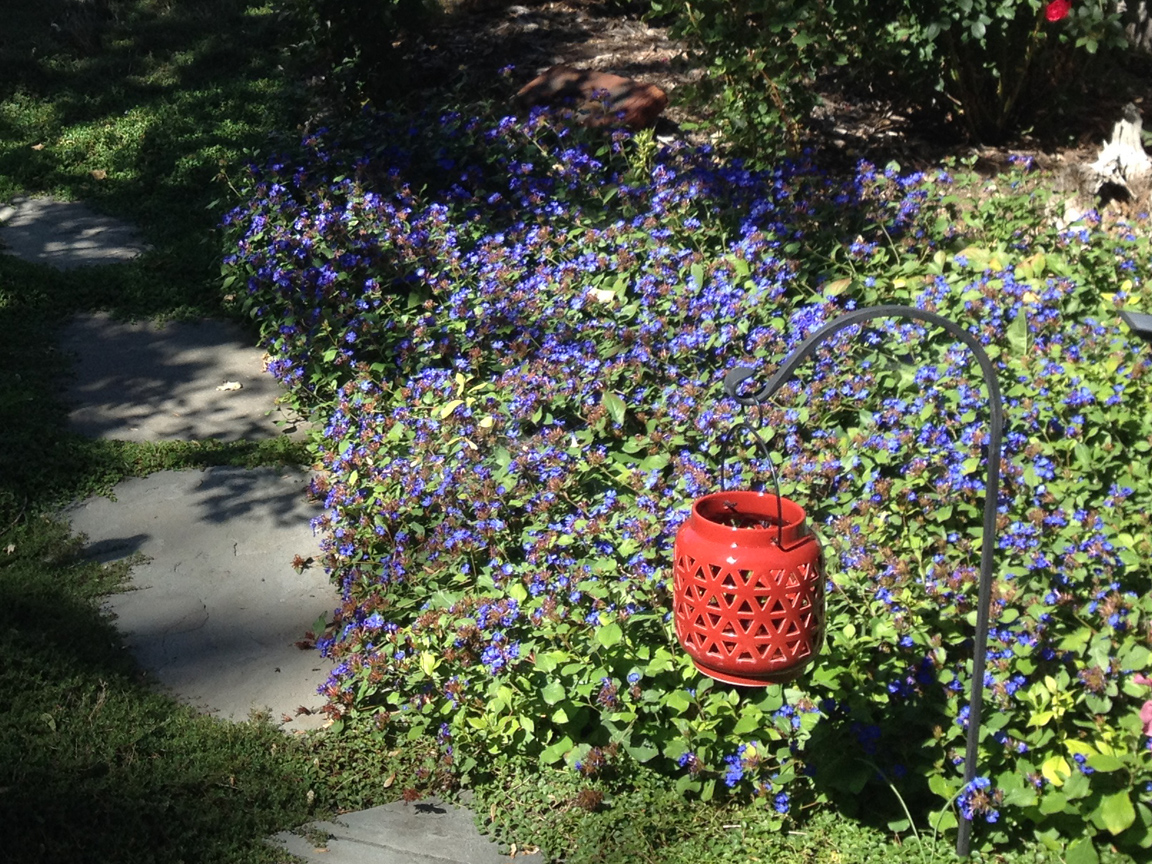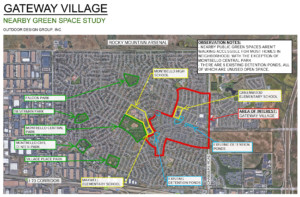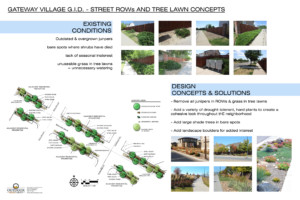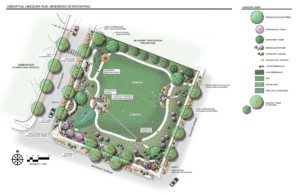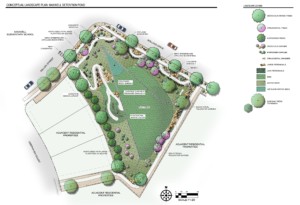Spring Clean-Up: The Most Important Landscape Maintenance Tasks for Spring
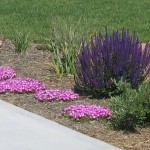
As Spring has arrived once more, we here at Outdoor Design Group have been thinking back to a past post we published, that ruminated on the importance of the annual Spring garden clean-up. We wanted to revisit that post and make some minor updates and add some extra information.
“Spring Clean-Up” includes the spring landscape maintenance tasks that are vital for a healthy and attractive landscape, especially for Xeriscape. This article is intended to give a simple, easy to follow guide covering the most important spring landscape maintenance tasks.
If you read our Fall landscape maintenance tips, you know that we are not a proponents of keeping the landscape perfectly tidy over the winter. Keeping a less tidy landscape over the winter is good for the health of the plants, and good for small wildlife like insects and birds. Now that spring is here, among other things you will need to clean your beds of those leftover leaves, and cut back your perennials and grasses.
Important Timing Dates
- March to April: Cut back perennials and grasses. Clean up leaf litter and other debris.
- Early May: Time to start up that irrigation system. Resist the temptation to start your sprinklers before May 1st. In Colorado, we generally get plenty of moisture in March and April so lawns do not generally need supplemental water yet, and it will go to waste. Many shrubs and perennials are only just beginning to emerge.
- The average last frost date in the Denver area is May 5th.
- The rule of thumb for planting new plants in the Denver area (and other Front Range communities) is to wait until Mother’s Day (middle of May) to plant new bedding plants. Consult sources such as NOAA to find the last frost date for your area.
- If you are starting seeds indoors for warm weather vegetables, herbs or flowers, St. Patrick’s Day is a good date to do so.
Ornamental Grasses and Perennials
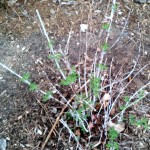
Woody perennials like Russian Sage may not completely die back
- Cut back herbaceous perennials and ornamental grasses so that they will grow back bigger and better than before. For perennials, cut them back to about 2″ to 3″ above the ground. For woody perennials, such as some of the sages, some of the old growth will often begin to leaf out and you can leave more of the existing plant to re-grow, or you can choose to cut it all the way back to a few inches above the ground.
- Most groundcover and other low growing perennials usually don’t need to be “cut back” but they may need to be cleaned up, with dead areas gently raked out or trimmed off.
- When cutting back ornamental grasses, a rule of thumb that we like to use is to cut them back to 1/5th (or 20%) of their mature height. Feather Reed Grass, for example, grows to a height of 4-5′, so you would cut them back to 10-12″ height.
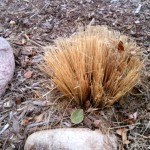
Cut grasses back to 1/5th of their full height
- Some ornamental grasses look better if they are not cut back, namely Mexican Feather grass. It won’t hurt the plant if you do cut it back, but the form of the plant looks better if not cut back.
- “Divide and conquer”! Divide up summer and fall-blooming perennials and grasses and transplant them throughout the landscape. This gives them time to grow this season, so that in the late summer you will have new plants to enjoy. With ornamental grasses, if the center of the plant is dead, cut this out and compost or discard.
- Wait to divide spring blooming perennials until early fall.
- Remove excess mulch and leaf scraps and other debris from around the bases of plants, along with any extra mulch that was placed around plants to protect them over the winter. Spring is the wettest time of the year along the Front Range, and the mulch is needed the least at this time. Leaving excess organic material around the bases of plants in spring can cause root rot, mold, and insect damage.
- Consider saving any seed heads or pods from perennials you’d like to have spread around the yard. You may want to save the seeds and start them indoors in nursery pots, or you can just simply break up the seed pods and sprinkle them in the areas you might want to see new plants.
Planting Beds
- Controlling weeds in bed areas is very important in the spring. You should to get a leg up on the weeds now, while the soil is soft and easy to work with and the weeds are small. A great time to pull weeds is when the ground is still moist from snowmelt or a spring rain. If weeds are allowed to “run wild” and set seed throughout the spring, you will have a maintenance headache later in the summer. Weed control can be a quick and easy task when done correctly from the start of the year through the end.
- For bed areas between plans that may have become uncovered during winter windstorms, add a new layer of mulch.
Vegetable Garden Beds
- Remove old/dead plant debris from last year. Compost this debris, unless this material was diseased. Tomato plants are very susceptible to diseases so we recommend never composting them, just dispose in the trash.
- Consider having a soil test done. Many gardeners add more nutrients (in the form of compost) every spring thinking that their soon to be planted veggies will need that extra boost; but if its not needed, it can backfire and cause problems. Ideally, vegetables and some perennials prefer soil that is 4-5% organic matter. Native plants and cacti prefer soil that is only 1-3% organic matter.
- If you want to add compost to your beds, the best time to do so is in the fall, giving the compost time to break down and ‘mellow’.
Lawns
- Aerate your lawn in spring. Aeration allows for greater movement of water, fertilizer, and air which stimulates healthy turf. Aerating also increases the speed of decomposition of the grass clippings and enhances deep root growth. Compacted soil especially benefits from core aerating. Be sure to mark the locations of sprinkler heads with flags prior to aerating so that they will not get damaged.
- It’s a good idea to rake the lawn areas once really well in the spring to clean up any leftover sticks, pine needles, etc. In the summer we use a self-mulching lawnmower that mulches and re-deposits the clippings in place rather than bagging them. However the first time we mow in the spring we like to attach the bagger to suck up any new clippings and other debris left over from the winter.
- If there are bare spots in your lawn, consider broadcasting some grass seed after you have aerated, and before a forecasted snow or rain event. The cooler and wetter conditions of Spring are perfect for germinating many popular lawn grass types.
- You may want to fertilize your lawn in the spring to give it a boost. Don’t over do it though, because fertilizer can wash off of your lawn and the runoff can be harmful to water supplies and wildlife. Consider timing your application of fertilizer right before a spring snow, so the melting snow can help the fertilizer percolate to the root zone of the grass.
- Remove or kill any emerging weeds, like dandelions, as soon as possible before they set seed and spread around your yard and into your neighbors’ yards.
- Early Spring is a good time to apply a pre-emergent herbicide on your lawn to prevent crabgrass. However if you have recently applied grass seed, do not apply a pre-emergent herbicide.
- Look at the size and shape of your lawn, and how much water you used this year in the battle with our dry climate to keep it green (or, brown?). Consult with a landscape architect about reducing your lawn area and redesigning your landscape to make it more attractive, sustainable, and functional.
Trees and Shrubs
- You can now remove tree wrap from trees. If you also have tree stakes and the tree is mature enough to not need them anymore, Spring is a good time to remove the stakes.
- For most trees and shrubs, don’t prune them in the spring. They are budding out and are susceptible to more stress and damage at this time. I find that it can also be difficult to tell whether a branch is dead or alive without physically checking each one, since the leaves have not yet emerged. Wait until late summer or fall to remove any dead branches and to do any other pruning.
- Some shrubs (butterfly bush, barberry, privet, Japanese spiraea) are best pruned in late winter or early spring. Other shrubs (lilac, forsythia, mock orange) and some trees (ornamental pear, redbud, pines and spruces) are best pruned in late spring or early summer. Generally speaking, you should not prune a plant until soon after it has flowered.
- Trees that are considered “bleeders” (have a lot of sap) such as dogwood, elm and maple should be pruned after the leaves are fully formed.
- But wait to prune young or newly planted trees and shrubs, until they have had some time to become established.
- In most Spring times, there is adequate precipitation for landscape trees and shrubs. However, if it’s been a dry winter and continues to be a dry Spring, keep an eye on soil moisture around your plants. Before you start your irrigation system in May, remember to check the soil moisture, and give trees and shrubs extra water if needed.
Irrigation
- Resist the temptation to start your irrigation system before May 1st. After May 1st, pressurize your irrigation system and check for and leaks and for proper spray distribution. Adjust the angle and throw of sprinkler heads. Check irrigation equipment for clogged nozzles and sprinkler heads for damage. Realign heads if necessary. Examine any drip irrigation to make sure there are no leaks or other issues, and plan to make regular check-ups on your irrigation system throughout the season.
- Stake down and cover with mulch any exposed drip irrigation lines.
Spring Weather Considerations
- Watch for those late spring snowstorms! Trees and shrubs that are flowering and/or leafing out can catch the heavy wet spring snow on their branches, often causing serious damage due to limbs breaking off. If you can safely do so, consider gently knocking off any accumulating snow during the wet spring snow events we typically get. This may save branches from breaking during the storm.
Other
- Check any metal edging to make sure that it is has not heaved over the winter. If it has popped up out of the ground, you should repair it. Edging keeps the sod from creeping into landscape beds areas, which can be a maintenance nightmare if it gets out of hand. Metal edging can also be a safety hazard to pets and children, if not properly seated or capped. If you have a plastic protective cap on your edging, inspect it and replace it if necessary.
- If you follow all of the above recommendations you will end up with a lot of organic material and cuttings as a result of your spring cleanup. If you have the space for it, consider composting this material. Or, rather than throwing the material away to go in the landfill, check to see if there is a local recycling center that will take the material to compost it.
- If you compost at home, do not include any weed seeds. Home composting does not heat up enough to kill the weed seeds.
- As you go about your landscape doing these Spring cleaning tasks, you will begin to accumulate quite a bit of organic material and cuttings. Most of it is very good organic matter that is great for composting. If you have space in your yard for it, consider composting it on site. This will provide you with a free soil amendment. Another option is to take it to your local recycling center where there might be a organic matter drop off location. However you accomplish it, composting is a better option for yard debris as compared to sending it to a landfill.
Spring cleanup is a time honored tradition among gardeners, as an excuse to get outside after the long winter months and to freshen up the landscape as it springs to life. With Xeriscape, spring maintenance is even more important. Since Xeriscape requires less regular maintenance through the summer, it is critical to get the summer started off right so that your Xeriscape will require very little maintenance throughout the year.
Regardless of the landscape style that you are maintaining, if you start off on the right foot in the spring you will be well on your way a beautiful landscape to enjoy throughout the coming year.
This is the official blog of Outdoor Design Group, Colorado Landscape Architects. For more information about our business and our services, click here.
